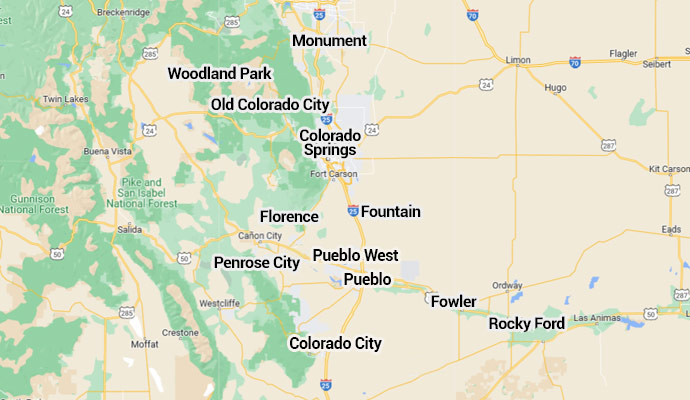Why You Should be Concerned About Asbestos in Colorado
Asbestos. Just the word makes most people cringe. We’ve all heard or seen advertisements warning of the possible health effects due to asbestos exposure (asbestosis, mesothelioma, and lung cancer). So, you may have figured that it’s been completely banned for decades by now. You would be wrong.
Because of how dangerous it is to human health, more than 50 countries, including the United Kingdom, Australia, Canada, and all 28 countries of the European Union, have banned the use of asbestos. But because it’s been only partially banned in the U.S. since the 1970s, asbestos is still around today and is still just as deadly.

Asbestos is Not New
Asbestos is natural and is found in about two-thirds of the earth’s rocks. It’s been in use for thousands of years. Some Egyptian pharaoh mummies were covered in asbestos-containing cloth to protect their bodies from decay. In Finland, pots made of clay discovered that were thousands of years old were found to contain asbestos fibers. It’s believed it was used to reinforce the pots and make them impervious to fire. And about 755, France’s King Charlemagne commissioned a tablecloth made with asbestos to keep it from burning during the unintentional fires that often occurred at feasts and celebrations.
With the start of the Industrial Revolution in the 1800s, asbestos manufacturing became a flourishing industry. That’s when the practical and commercial uses of asbestos, with its myriad applications, became widespread. Since then, millions of metric tons of asbestos have been imported and installed throughout the United States.
Where Asbestos is Found Today
According to the U.S. Geological Survey, in 2018 alone more than 750 metric tons of asbestos were imported and sold despite the knowledge and its classification as a human carcinogen as well as its toxicological profile. Today, as asbestos-containing materials or products can be found in most structures that have been built throughout the U.S. despite their year of construction,
Although it is less commonly found or reported today, asbestos-containing items like these have been used in building construction for many, many years:
- Cement corrugated/flat sheets
- Pipeline wraps
- Roofing felt
- Vinyl floor tiles
- Cement shingles
- Cement pipe
- Roof coatings
- Millboard
- Vinyl wallpaper
- Electrical Components
But besides building materials, asbestos has also been found in thousands of other consumer goods and products too. For instance, it’s been discovered in some varieties of crayons, makeup/cosmetics/personal hygiene products, clothing, car components, gardening supplies, etc.
So, you’re likely to find asbestos in most structures that have been built in the U.S. Most of these products pose no danger as long as they stay intact, undisturbed, and in good condition. But cutting, sanding, or creating dust during even the smallest renovations, repairs, or restoration projects could lead to damaging and long-lasting health effects as well as substantial contamination and exposure risks if asbestos fibers are disturbed and/or released into the air.
Asbestos Removal Needs to be Handled by Professionals
If your Colorado home or business has been damaged or is about to undergo renovations, then it should first be tested for asbestos by certified professionals. With the proper equipment and procedures at hand, Cyclone Kleen Up will ensure your property is free from the harmful effects of asbestos.
Before any materials are removed, our expertly trained technicians will first test your building to determine if and where asbestos is located and which rooms are being affected the most. Once that’s completed, we’ll seal off the contaminated area to eliminate the dispersal of any asbestos particles and then start the removal process. We will safely dispose of asbestos-riddled items and contaminated areas of the structure, then make a final inspection before leaving the premises.






